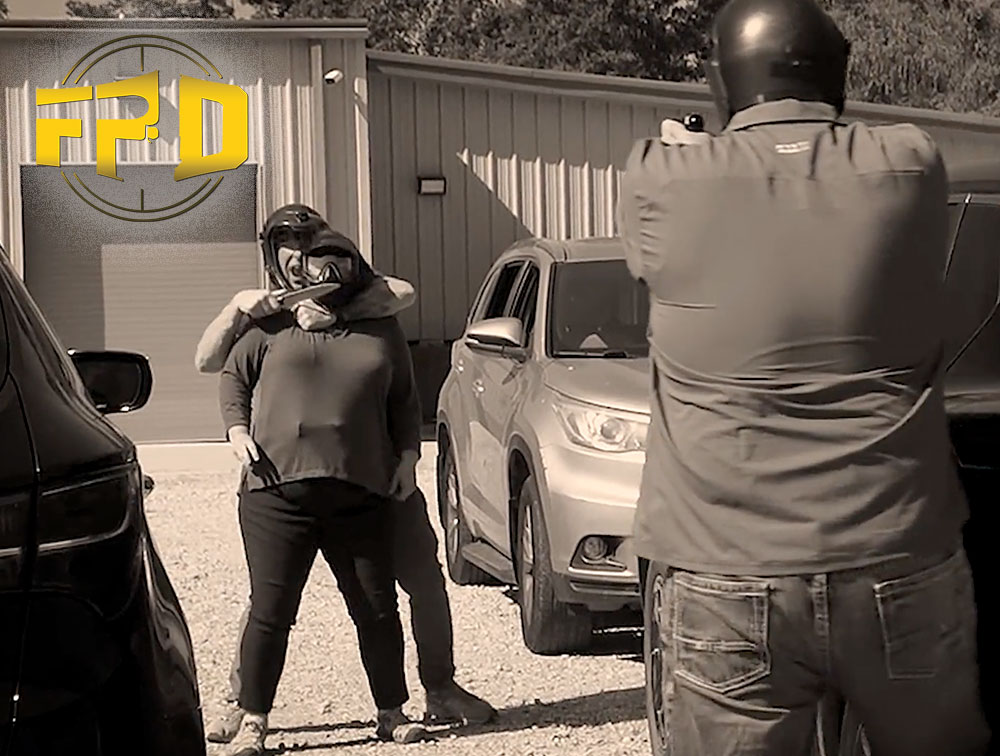
In one of the most intense episodes of First Person Defender Season 14, Neil and Stephannie Weidner of the Active Self Protection team face the ultimate nightmare: a hostile carjacking-turned-hostage situation—twice. It’s chaos, pressure, and the sharp edge of decision-making all in one compressed moment. This episode isn’t just a tactical case study—it’s a raw, emotional look at how couples can face deadly threats together, with life-or-death consequences unfolding in seconds.
Round One:
Neil and Steph are seated in a parked vehicle. The hood comes off. A man with a weapon demands the car—and holds Steph at knife point. Neil quickly calculates: they’re three yards apart, he’s got a shot. Despite getting shot himself, Neil makes a bold, clean headshot that stops the attacker cold.
Round Two:
To raise the stakes, First Person Defender adds a second threat. This time, while the first attacker again targets Steph, a second armed criminal climbs into the back seat. Neil now faces a layered threat environment—two attackers, one hostage, no margin for error. He attempts to give up the car, sneaks around the rear, and when the moment is right—draws, engages, and neutralizes both threats, ensuring Steph walks away safe.
The hood comes off, and you’ve got seconds to assess your surroundings, identify threats, and act. Neil immediately clocks the hostage situation and initiates verbal commands while positioning for a shot. That kind of instant decision-making doesn’t come from hope—it comes from training.
Neil chose to close distance to get a better angle on the attacker and protect Steph. While he took a simulated round, the tactical tradeoff made sense: get closer, get cleaner hits, save the hostage. Sometimes, you have to take a hit to stop the kill shot aimed at your loved one.
Neil pulled off two precision headshots in one of the toughest defensive scenarios imaginable. That’s not luck—it’s practice, practice, practice. Shooting at small targets, under stress, is a skill every defender should work on, especially when loved ones may be in harm’s way.
Steph played a crucial role—not interfering, staying alert, and trusting Neil’s lead. While they hadn’t rehearsed this exact scenario, their mutual understanding and trust served as an unspoken plan. Your partner doesn’t need to be armed to be an asset.
In the second scenario, Neil wisely assumed the attackers might not be working solo. It’s a dangerous assumption to think every bad guy is alone. As the second attacker moved into position, Neil adapted mid-fight and managed both threats under immense pressure.
Inspired by Neil’s performance? Take these exercises to the range and up your game:
Purpose: Improve precision under pressure
Purpose: Train movement around cars during a confrontation
Purpose: Simulate situational scanning and prioritization
This wasn’t just a carjacking. It was a gut-check. A test of love, loyalty, and lethality under pressure. Neil proved what we always say at First Person Defender:
Neil and Steph walked away because he trained for the worst-case scenario—and didn’t flinch when it came.